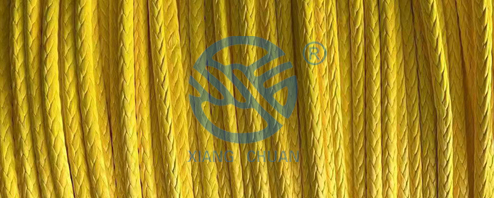
Mooring tails are an essential component of any vessel's mooring system, as they provide a connection between the ship and the mooring line. However, mooring tails are prone to wear and tear due to the constant strain and pressure they experience during mooring operations. Preventing wear and tear on mooring tails is crucial to ensure the safety and security of the vessel.
There are several ways to prevent wear and tear on mooring tails, including:
1. Regular Inspection: One of the most effective ways to prevent wear and tear on mooring tails is to conduct regular inspections. Inspecting the mooring tails for signs of damage, wear, and deterioration can help identify any issues early on and prevent them from escalating. Inspections should be carried out by trained personnel who are familiar with mooring systems and know what to look for.
2. Proper Maintenance: Proper maintenance of mooring tails is essential to prevent wear and tear. This includes regular cleaning, lubrication, and inspection of the tails to ensure they are in good condition. Mooring tails should be kept free of dirt, debris, and contaminants that can cause abrasion and damage. Lubrication can help reduce friction and wear on the tails, extending their lifespan.
3. Use of Protective Covers: Using protective covers on mooring tails can help prevent wear and tear. Protective covers can shield the tails from abrasion, UV exposure, and other environmental factors that can cause damage. There are various types of protective covers available, including nylon, PVC, and rubber covers, which can be customized to fit different sizes of mooring tails.
4. Proper Storage: Storing mooring tails properly when not in use can also help prevent wear and tear. Mooring tails should be stored in a dry, clean, and well-ventilated area to prevent moisture buildup and corrosion. Tails should be properly coiled or hung to avoid kinks, twists, and tangles that can weaken the material.
5. Avoid Overloading: Overloading mooring tails can cause excessive strain and pressure, leading to wear and tear. It is important to ensure that the mooring tails are rated for the maximum load they will be subjected to during mooring operations. Using oversized or undersized mooring tails can also lead to premature wear and failure.
6. Replace Worn Tails: It is important to replace mooring tails that show signs of wear, damage, or deterioration. Continuing to use worn or damaged tails can compromise the safety and security of the vessel during mooring operations. Regularly inspecting the mooring tails and replacing them as needed can help prevent accidents and downtime.
In conclusion, preventing wear and tear on mooring tails is essential to ensure the safety and security of vessels during mooring operations. By following these tips, vessel operators can prolong the lifespan of mooring tails and minimize the risk of accidents and failures. Regular inspection, proper maintenance, use of protective covers, proper storage, avoiding overloading, and replacing worn tails are all important steps in preventing wear and tear on mooring tails.


 +86-514-88253368
+86-514-88253368






